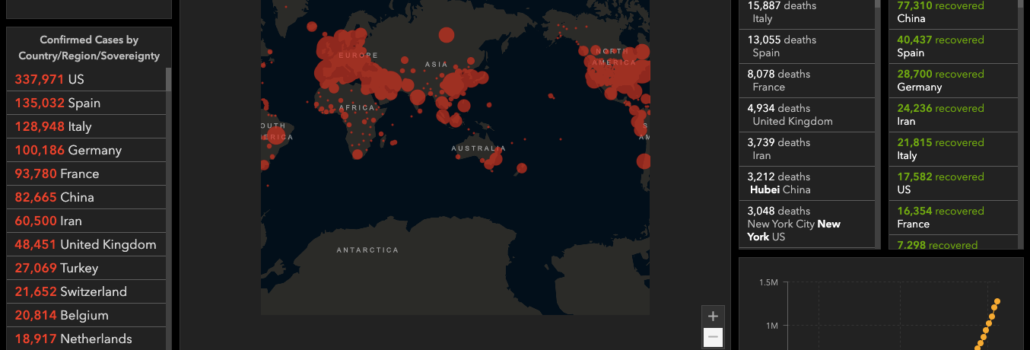Tech Company Content Marketing and SEO: Are You Sitting on a Gold Mine?
For content marketers, getting paid to be creative every day is usually a blessing, but it’s not always easy. This is particularly true for content marketers working in highly technical industries.
In addition to the normal difficulties of content marketing—SEO updates, consistency, quality, etc.—technical content is extremely, well … technical. Writing authoritative, compelling copy requires more than just a basic understanding of your products.

How do you translate those ideas and concepts for a blog audience? If you don’t actually work in IT, how do you get your colleagues to carve time out of their already busy schedules to help you create meaningful content?
It can seem overwhelming, but what if I told you that you don’t have to do either one of those things? That the content your audience wants—the stuff they’re already looking for, and the stuff that will provide a big boost to brand authority and sales—already exists, and is hiding in plain site?
It’s true. You just have to know how to find it, and you might have to sacrifice some sacred cows in the process.
The Secret to Content Marketing in Technical Industries: Keyword User Intent
Good content marketing always starts with keyword and user intent research. Before you can create great content for your audience, you have to know how they’re using search engines and what they want to find.
In tech industries, the answers to those questions aren’t what content marketers usually expect. Many marketers work hard to translate technical topics into layman’s terms, and to incorporate as many savvy content marketing tactics as possible.
But the truth is, typical content marketing is not what most technical audiences are looking for.
Highly technical audiences—like cloud architects and developers—are looking for detailed, lengthy, highly technical content that answers very specific questions and pain points. We know this from looking at search results for key terms. For example, search results for [git rebase] (a decent term, with about 65,000 monthly searches) start with:

For highly technical industries, search queries around applications and even peripherally related technical terms almost always have strong “learn” intents. Users want the dense, difficult, technical content that answers their questions. Technology is their business and livelihood: they want to (1) make sure they understand how any supporting solution works, and (2) trust the authority and knowledge of the company producing it. Then, after making a purchase, those same customers need to learn how to use the product and overcome mistakes or fix errors.
Despite some of the best content marketing advice, considerations like creative headlines, compelling content, and user-friendly page design are almost irrelevant to this audience. They want real, authoritative answers.
Transforming Technical Documents into SEO Gold
Most of the content you need already exists. You don’t need to wait on coworkers who have a high level of technical knowledge to help you create new content content. Your brand’s internal and support documentation has everything you need.
Yet many technical companies structure help documentation completely apart from their marketing sites, and often in formats that are not convenient for users or search engines. These companies are making it harder for users to find critical information, but are also missing out on an easy and invaluable opportunity to connect with potential customers and demonstrate their knowledge and authority.
Providing search-optimized answers to common questions your customers and prospects ask, satisfying consumer needs, building brand trust and authority, and increasing organic traffic is as simple as repurposing and reformatting existing support documentation.
Reformatting Technical Documents to Boost SEO
In many cases, transforming technical documentation into traffic-driving content is a simple matter of organizing, optimizing, and repurposing it to make it more user-friendly and indexable.
The first step is to gather all the PDFs, hardcopy manuals, and other documentation you can get your hands on. Next, review the documentation, looking for opportunities that fit easily into your content strategy.
- Identify core themes and ideas. These serve as the basis for your strategy and contain the information you’ll need to organize content and create resource landing pages.
- Compile a list of more focused topics. Topics that are too specific for resource landing pages but too broad for simple FAQs make perfect blog fodder.
- Make note of common questions. Those with short answers work well for general FAQ pages, and those with longer answers can be presented as detailed help pages.
- Determine how to organize the content on your site. The easiest way is to start with the content that will cut and paste into tidy blog posts. An FAQ page will usually nest well under an About tab in the site’s main navigation. Larger content pieces can become authoritative landing pages and organized in a Resource Center.
- Transcribe videos. If you have preexisting how-to videos hosted on third-party sites, use them to drive traffic to your site instead. Embed the videos onto unique landing pages in your site’s Resource Center, and transcribe them to transform tutorials into high-ranking content.
- Add metadata to manuals and ebooks. If you already have support documentation on your site in PDF format, you can optimize those documents by adding metadata to the file properties.
Keep in mind that Google prefers to index and serve HTML files, so the more content you break out of manuals and PDFs to serve on individual HTML pages, the more organic traffic you’re likely to bring in through SEO.
Need to Start Small? Optimize Your Documentation Subdomain
If your company is hosting most of this documentation on a subdomain or DocHub, and you don’t have the resources to commit to a serious repurposing just yet, your SEO will still benefit dramatically from thoughtful organization and content updates to the subdomain.
A lot of brands use those subfolders simply to collect support documentation. Little thought is given to how they are organized, because … well it’s just support documentation. They aren’t sales or product pages, right? But, as we’ve seen, that content is what users are searching for, so it has a lot of potential to drive organic traffic.
- Get organized. Sort through the material being stored and create some thoughtful, topic-based organizational structure. This will help users navigate, but it will also help search engines understand and index the content.
- Translate PDF content to HTML. If the content is largely PDF downloads, copy and paste at least the opening, summary, and/or keyword-rich snippets into the text on the download pages. This will improve UX by giving readers a preview of what they’re about to download, and it will improve SEO by giving search engines content they can read.
- Link to the documents from your site. Subdomains are not an SEO best practice, but if you don’t have the resources to start repurposing and moving content to the main site right now, then you optimize what you have. Creating prominent links to the documentation throughout the site will improve authority and SEO for both.
Excavating Even More SEO Gold
While some of the content you’re looking for will be easy to find—product manuals are likely available in abundance—others will require a little more investigation. To uncover all optimizable documentation, you can search in a variety of places:
- Check call logs and support tickets. If your company keeps logs of customer service phone calls, read them. Logs or support tickets can provide extensive information about what issues drive phone calls and what solutions are available for those issues.
- Look for relevant social media interactions. Look for interactions between your brand and customers on social media channels. What questions received a response and were resolved? Additionally, compile a list of how-to videos that have already been created and posted to YouTube (or another third-party channel).
- Review forum questions and answers. While your forums may already appear in search results, displaying answers to users via forum content can provide a less-than-ideal user experience. If answering a question requires a lot of back-and-forth, or if the content is specific to an edge-case, forum answers may diminish brand credibility or confuse customers.
- Dissect product manuals and readme files. Often, the answers to important questions are included in official documentation like product manuals and readme files, but customers with a single question looking for a simple answer will be overwhelmed by long, detailed documents for individual answers. Readme files in .txt formats provide especially poor user experiences.
These sources will provide information on which queries customers are asking about most often, providing an easy way to prioritize what documentation needs to be revised and optimized first.
Technical Documentation That Drives Traffic
Optimizing support documentation is a simple way to grow organic site traffic and increase your brand authority and credibility. Additionally, it can improve your ROI by decreasing call volume—reducing incoming calls to sales team members and your customer service department.
Since the content already exists, optimizing it is a simple matter of collecting documentation, analyzing it to identify common themes, and repurposing it in a way that is both consumable by customers and indexable by search engines. Depending on how much documentation your company already has, rounds of review, repurposing, and republishing can keep your calendar full for months.
Sifting through all product documentation may sound like a daunting task, so start small by reading through documents that are readily available. This will allow you to begin organizing your site to accommodate for optimized help documentation as well as measuring success—via increased traffic, reduced call volume, or higher customer satisfaction—that results from the initial stages of your new strategy.
What's Next?
Profound Strategy is on a mission to help growth-minded marketers turn SEO back into a source of predictable, reliable, scalable business results.
Start winning in organic search and turn SEO into your most efficient marketing channel. Subscribe to updates and join the 6,000+ marketing executives and founders that are changing the way they do SEO:
And dig deeper with some of our best content, such as The CMO’s Guide to Modern SEO, Technical SEO: A Decision Maker’s Guide, and A Modern Framework for SEO Work that Matters.




